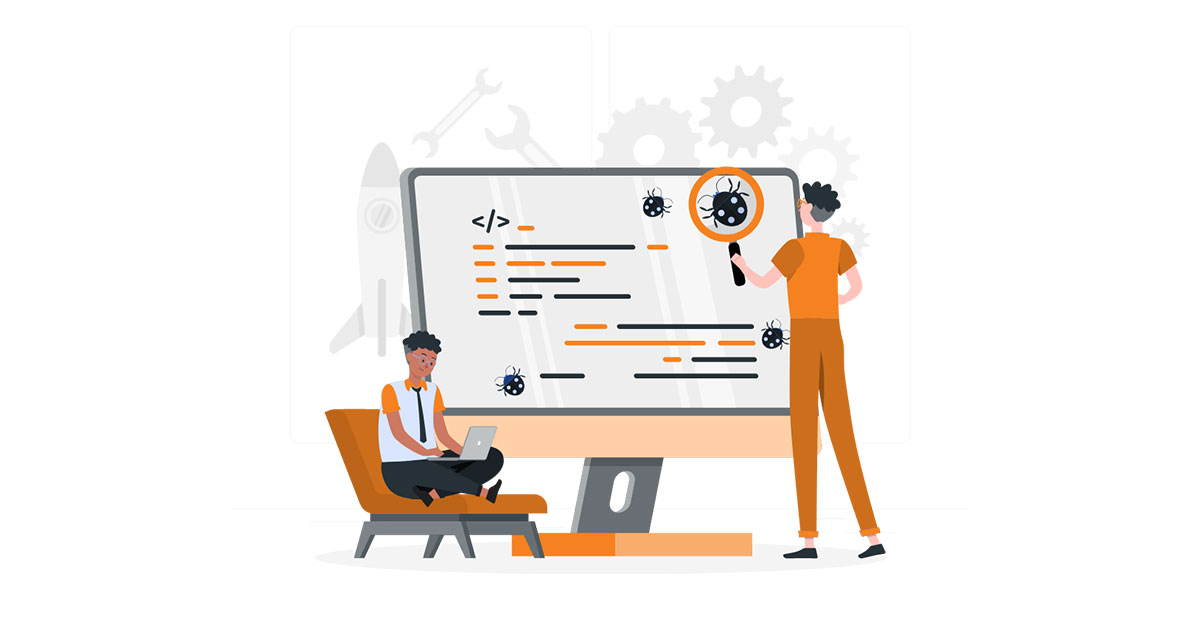Quick Summary: Software testing has witnessed some of the most significant trend changes to help businesses keep up their software quality. Are you looking to enhance your software quality? Do you want to know what software trends are in demand in 2023? What is big data testing, and why are businesses adopting API testing? This blog post highlights the current software trends of 2023! Based on which, you can hire a software testing company for your projects.
Did You Know?
The US software testing industry will be worth $6.8 billion in 2022.
According to Global Marketing Insights, the software testing services market is looking at an estimated CAGR growth of 7 percent, due to better integration of AI, in the years 2021 and 2027.

From becoming a multi-millionaire dollar business to scriptless testing, software testing has come a long way. In 2023, we are here after an in-depth analysis of the market trends and the greatest prioritized technologies.
The technologies that have been researched have started to trend in software testing in the most significant manner in 2023. Let’s understand what these trends are and why are they essential this year!
Few Popular Software Testing Trends for 2023
1. QAOps
QAOps is one of the fastest-growing software testing trends, which is the perfect combination of Quality Assurance and IT operations. To achieve high-quality software QAOps utilizes a DevOps-based approach, you’ll need access to top-notch software testing company.
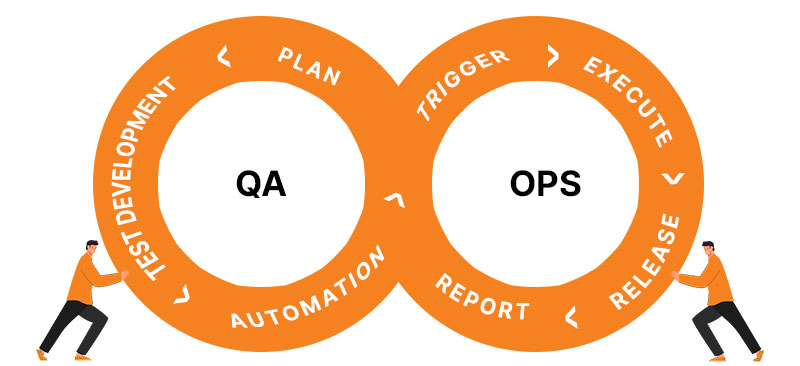
Traveling back a year or so, QAOps was limited to consideration and implementation, but in 2023, it is projected to enter into the software development lifecycles.
In QAOps, the testing team collaborates with the operation and developer teams. The testing teams are actively involved in the continuous integration and development.
Build with combining two processes, QA & DevOps-QAOps, is changing software testing scenarios. With QAOps, it is easy to integrate the testing process into the DevOps, and it allows engineers for efficient in the integrated process.
2. Scriptless Automation Testing
As the name suggests, scriptless testing focuses on automating tests instead of writing long scripts. Scriptless testing records the tester’s actions and generates different tests required for different features.
According to some studies, scriptless test automation reduces the test time to market by up to 40 percent.
Developers can deploy different testing tools equipped with unique features for UI testing, and regression testing, among others. Based on the test frameworks generated by scriptless testing, testers can get a lot of flexibility and generation of test use cases.
3. Big Data Testing
Data is critical to the success or failure of any firm.
A massive dataset that cannot be handled using typical procedures is called big data. Organizations employ large-scale tools, strategies, and frameworks created for big data to evaluate massive datasets.
Data quality testing, performance testing, and functional testing of structured and unstructured data are all part of considerable data testing.
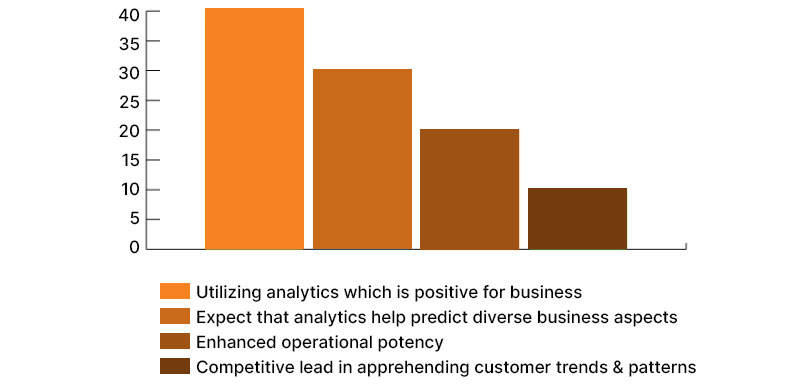
Big data testing is used by businesses to analyze massive datasets
Related Post:Software Testing Outsourcing: 10 Things You Need to Know Before
4. IoT Automation Testing
Since 2021, IoT has been in trend. According to Statista, in 2021, more than 23 billion IoT devices were active and connected to the internet. This number is projected to be around 50 billion by 2030.
According to Metova, people are keen on adopting IoT into their daily lives, and 85 percent are interested in buying one daily.
Such an increase in growth brings in a lot of responsibility for IoT developers, manufacturers, and testers.
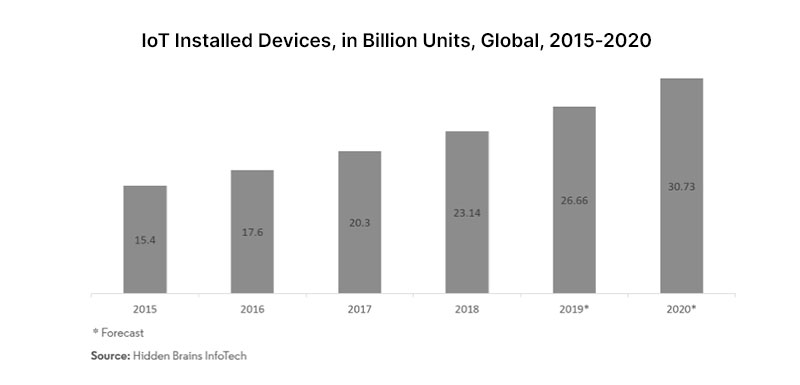
IoT is employed in sensitive data such as video footage from CCTVs or personal health data, among other things.
Such sensitive data must be adequately safeguarded before being transmitted over internet networks.
As a result, a specific emphasis remains on the automated testing of IoT devices utilizing relevant data.
For example, if we are testing a voice assistant, we will need to compose many human-like utterances.
It will be one thing to look forward to in 2023, with such a surge in the IoT market.
5. AI/ML-Based Testing
Artificial intelligence (AI) and machine learning are two more software testing trends to keep an eye on in 2023. However, they aren’t relatively new. From Chatbots to predictive systems, AI has already made its mark in the market and is now expanding in based ways.
According to GrandViewResearch, this expansion will result in a $62.3 billion business in 2021, rising at a 40% pace.
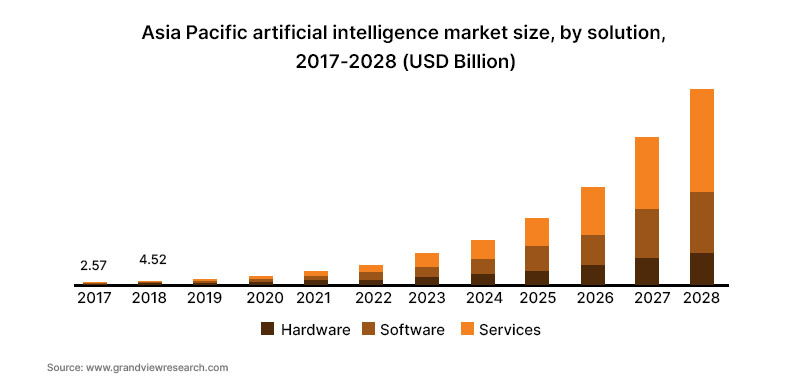
All of these artificial intelligence application has primarily been in the development area. AI is used to anticipate and show data but not to validate the predicted data, and so on. AI began to be used in the testing department in 2021, and we anticipate it will be as crucial to testing as it has been to development.
So, what could be good use cases in software testing that can attract AI and shed off the tester’s load? Even though business logic is quite far from AI, generating test cases can be a good use case to bet on. Similarly, AI can help generate test case data specific to the module with varying fields and validations. Hire outsourced software testing services to help you get ahead.
6. Robotic Process Automation (RPA)
Robotic process automation was adopted in the software process some time back, and we expect it to be in the trend in 2023.
According to Research and market survey, the RPA revenue is projected to be around 3.4 billion US dollars by 2027. With 28.2% year-on-year growth, RPA is always preferred to be the first choice for performing the automation of mundane tasks.
RPA, also known as robotic process automation, is a method of automating repetitive processes that do not require manual involvement. RPA records the tester’s activities for the first time to keep track of what must be done.
RPA then conducts many scenarios on the screen using artificial intelligence and machine learning. Because it is automated, it saves the firm time and money.
It’s similar to test automation based on the preceding definition because it also mentions completing repetitive activities. It is a misunderstanding, so we have produced a separate piece outlining how RPA differs from test automation, complete with use cases and examples.
7. Shift-left Testing
One of the odd developments in software testing is shift-left testing.
Shift-left testing is done on the left side of the workflow, whereas traditional software testing is done on the right.
Developers are encouraged to test early in the software development life cycle using shift-left testing.
An organization may create high-quality code, do away with code patches, promote proactive cooperation, and save time and money by testing early.
8. Blockchain Testing
Due to the popularity of blockchain technology, one of the rising trends in software testing is blockchain testing. Blockchain testing examines the security and dependability of the shared ledger network that links several blocks.
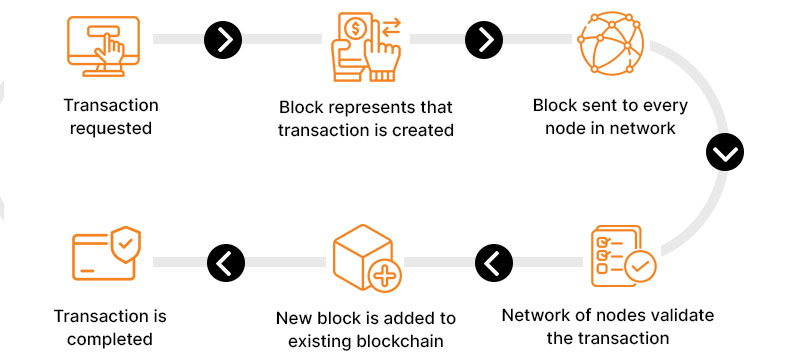
A given node in a collection of blocks may contain several software programs. Blockchain testing examines not only security but also the load capacity and scalability of blockchain databases and ledgers.
9. Cybersecurity Testing
Organizations may defend software applications against hackers and viruses by doing cybersecurity testing. Businesses may find weak spots and avoid security breaches by employing this testing strategy.
Cybersecurity testing safeguards the personal information of users, stakeholders, and other engaged parties while defending your application from malware.
Organizations use cybersecurity testing to protect software applications from hackers.
10. In-sprint Test Automation
The software testing process known as “in-sprint test automation” became famous in 2021 and will do so again in 2023. Organizations must work swiftly and deliver new versions as soon as possible, thanks to the agile methodology.
Because of this, we are testing the software can only be done within the first two to four weeks of a sprint. As a result, testers are frequently observed trying an earlier version that contains a significant flaw.
According to a study by Celerity, if you release your version with just regression and DDT methods, many bugs might get into the production costing you atleast 100 times more.
This procedure is altered by in-sprint test automation, which enables testers to participate in the same sprint step-by-step.
A testing team may start throughout the development phase rather than wait until it is finished.
Wrapping Up
Different technologies improve with each passing year and day. We investigate, test, and refine in every sector, whether it be development, management, or testing. With this, we officially welcome some of the major factors that we anticipate will emerge this year and play a bigger role in our trying lives.
To make sure that software is free of errors and prepared for users, organisations must educate themselves about the various trends in software testing. In order to run the tests securely, businesses must also take into account the type of software and testing settings.
Become future-ready with our hybrid QA outsourcing services.
Request Free Consultation
Summary
Kickstart Your Project With Us!
Popular Posts
CONTACT US
Let's Build Your Agile Team.
Experience Netsmartz for 40 hours - No Cost, No Obligation.
Connect With Us Today!
Please fill out the form or send us an email to

